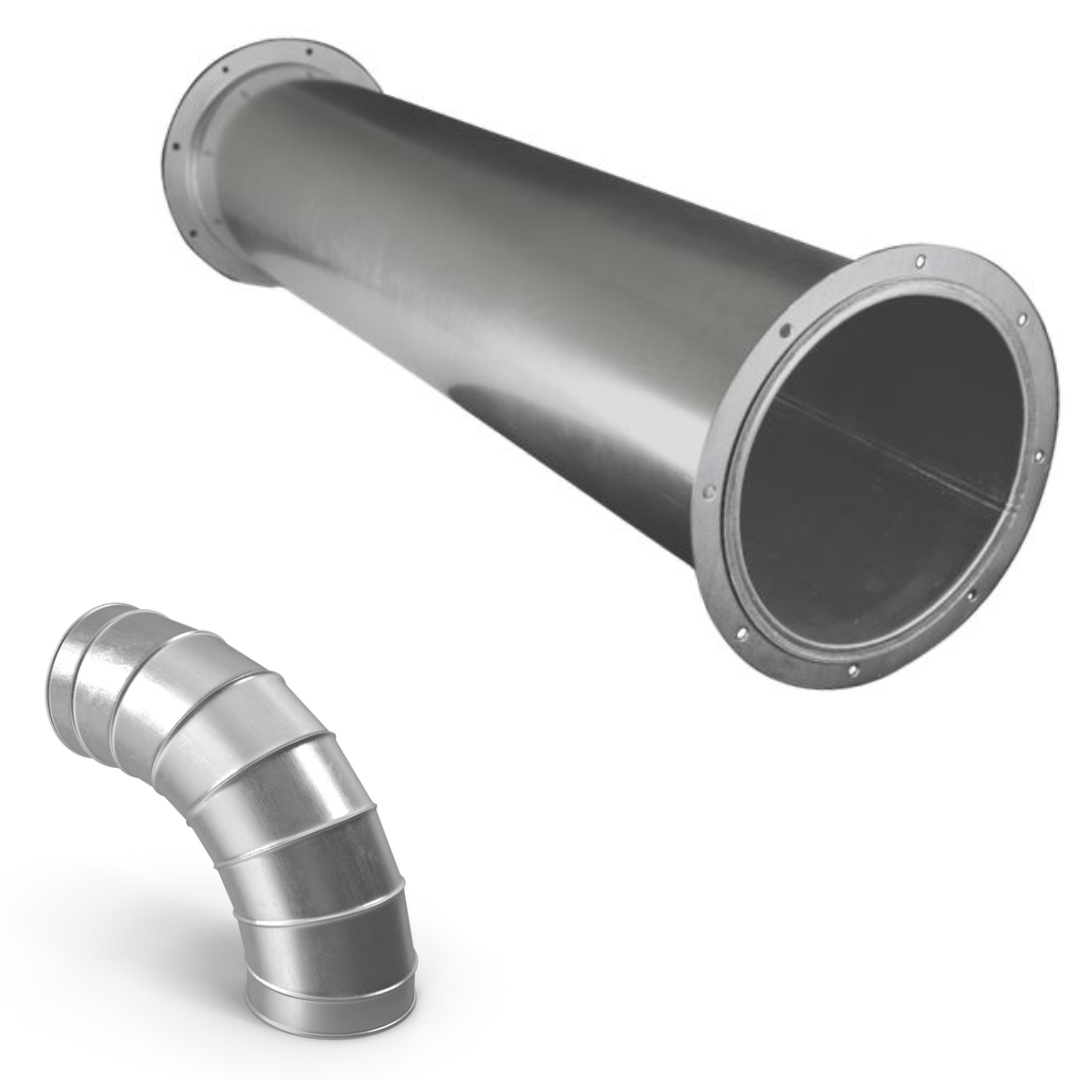Plain Round Ducting
Home | Plain Round Ducting
Plain Round Ducting
We are a leading manufacturer and supplier of factory-fabricated ducts, and Ventilation Ducts, including TDF Flange Ducts and C&S Flange Ducts, based in Mohali. Known for our expertise, efficiency, and superior quality, we specialize in designing, manufacturing, delivering, and installing ducts for a wide range of industries.
We perform air leakage tests to assess the quality of our ductwork. These tests are mandatory for medium to high-pressure duct systems as per SMACNA standards. Typically conducted on a random sample after installation, they ensure top-quality, efficiently designed ducting.
We excel in manufacturing and delivering solutions for luxury residential, pharmaceutical, shopping complexes, hospitals, OT Institute textile, and clean room applications
Material:
- Galvanized Steel: The most common material for rectangular ducts, known for its strength, durability, and corrosion resistance.
- Aluminum: Used for lightweight applications and in environments requiring higher corrosion resistance.
- Stainless Steel: Chosen for high-durability applications, particularly in corrosive or extreme conditions.
Strength:
- Rigid and Strong: Rectangular ducts are typically made from durable metals, offering significant strength and resistance to deformation under normal operating pressures.
- Structural Integrity: The rectangular shape provides a stable structure for maintaining the air pressure in HVAC systems, particularly for larger ducts used in commercial or industrial settings.
- Load-Bearing: Designed to handle both internal air pressure and external loads when installed in walls or ceilings.
Corrosion Resistance:
- Galvanized Steel: Offers good corrosion resistance due to the zinc coating, making rectangular ducts suitable for most indoor applications.
- Aluminum: Naturally resistant to corrosion, making it ideal for environments with high humidity or moisture.
- Stainless Steel: Superior corrosion resistance, particularly in harsh environments, such as coastal or chemical-exposed areas.
Fabrication:
- Manufacturing Process: Rectangular ducts are fabricated by cutting, shaping, and welding or riveting metal sheets to form the rectangular shape. The seams may be mechanically fastened or sealed.
- Custom Sizing: These ducts can be made in various sizes and lengths to suit specific installation needs, including custom openings for diffusers and vents.
- Easy to Customize: Can be tailored to fit tight spaces or specific airflow requirements, often with the use of elbows, tees, and other fittings.
Applications:
- Commercial HVAC Systems: Commonly used in office buildings, schools, hospitals, and malls where large-scale, efficient air distribution is required.
- Residential Applications: In homes, particularly in systems that require more complex ductwork layouts or where space constraints make rectangular ducts preferable.
- Industrial Ventilation: Utilized in factories, warehouses, and other industrial settings for high-volume air movement and ventilation.
- Air Handling and Exhaust: Ideal for air distribution and exhaust systems, particularly in spaces where a flat or compact duct is needed.
Cost-Effectiveness:
- Moderate to High Initial Cost: Rectangular ducts can be more expensive than round ducts due to the fabrication process and material requirements. The cost depends on the size, material, and complexity of the installation.
- Long-Term Savings: Their efficient design and strength reduce the need for frequent repairs or replacements, leading to cost savings over time.
- Energy Efficiency: When properly sealed, rectangular ducts minimize air loss and maximize airflow efficiency, leading to lower energy consumption.
Maintenance:
- Low Maintenance: Once installed, rectangular ducts typically require minimal maintenance, provided they are sealed and insulated properly.
- Cleaning: Routine cleaning is recommended to prevent dust and debris buildup, which could reduce airflow efficiency.
- Inspection: Regular checks for leaks, damage, or obstructions ensure that the system continues to operate efficiently.
- Longevity: The durability of materials like galvanized steel and aluminum means that the ducts have a long operational life with relatively few issues


